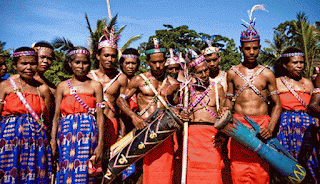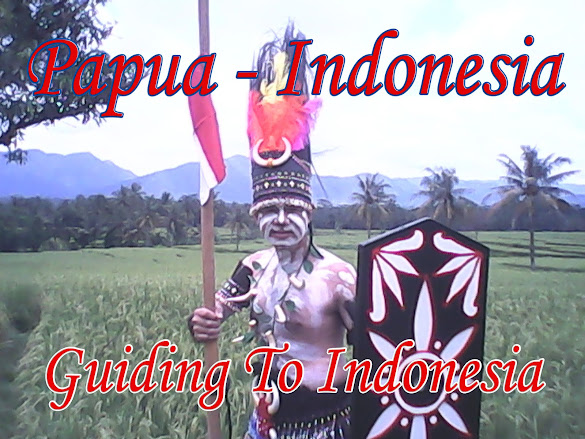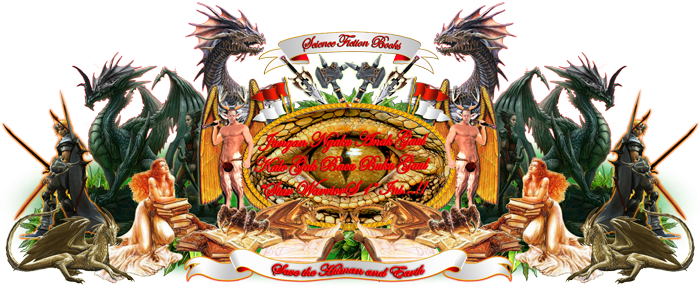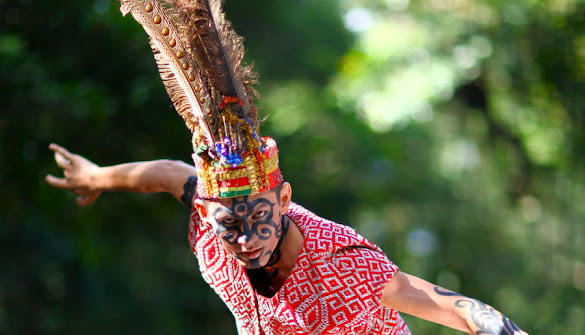Maluku
The Capital City of Maluku Province is
“Ambon”
Maluku (Moluccas), a region of
Indonesia formerly known as the Spice Islands, was once the source of cloves
and nutmeg, spices highly valued for their aroma, preservative ability, and use
in medicine before people learned how to cultivate the plants in other parts of
the world. Maluku is a cluster of about one thousand islands totaling 74,504
square kilometers, forming part of the Malay Archipelago in eastern Indonesia
near New Guinea. The region is divided into two provinces, Maluku with its
capital in Ambon, and North Maluku (2002 estimated population 913,000), with
its capital in Ternate; other important islands in the group include Halmahera,
Seram, and Buru.
Maluku is an
archipilago of thousand large and small islands, surrounded by the tranquil
deep blue oceans. Formerly Maluku was part of the legendary spice islands and
it’s Banda Island which surrendered to Dutch East Indies Companies instead of
Manhattan Island-USA to Portuguese in the 17th century.The rest is
sea, in any places thousands of meters deep. Maluku is transition zone between
the Asian and Australian fauna and flora, and also between the Malay, based
cultures of western Indonesia and those of Melanesia.It is 999 islands support
a population of less than 2 million people. The average population density
figure is 20 people per square kilometer, but the distribution is uneven. Air
and sea transportation are the main means which link the islands together. The
province has has 32 sea ports and 20
Airports, and only about 1,60 kilometers of land roads. Good roads on many of
the islands provide easy access to the often remote places of tourist interest.
A great variety of
endemic plant and animal species are found the rugged forest covered and
mountainous hinterland of most of the islands. A few of the best known are the
Racker Tailed King Fisher, the red crested Moluccan Cockatoo, and various
brilliantly colored lorikeets and parrots.Most of Maluku sits astride one of
the world’s most volatile volcanic belts. The region has known more than 70 eruptions
in the last 400 years. tremors and volcanic eruptions are by no means rare even
at present. Many islands, in fact, look from a distance like volcanic cones
rising right out of the sea.
The Spanish also
came, but posed little trouble to the Portuguese. The Dutch, who arrived in
1599, on the other hand proved to be their toughest contestants in the quest
for Maluku’s treasures. Armed conflicts broke out, taking a tall not only among
the two rival European powers, but also among the local populations of the
islands. To make it short, the Dutch finally emerged winners and established
their trade monopoly with iron hand. Whole villages were razed to the ground
and thousands of islanders died in the so called Hongi expeditions lunched by
the Dutch to maintain their trade monopoly, especially on the island of Banda.
The British
occupied Maluku for a brief period during the Napoleonic war between England
and France. Dutch rule was restored in 1814, leading to a new rebellion under
Matulassi which the Dutch suppressed with difficulty. The compulsory
cultivation of spieces was abolished in Maluku only in 1863.Traces of that
turbulent period in Maluku’s history could still be found on a number of islands.
Maluku’s great attraction for present day visitors is it’s sea gardens, and
beaches and the beauty of the land. Maluku’s music dances and hybrid culture in
general, too, are among the provinces strong touristic drawing cards.
Fish and other sea
products are nowadays Maluku’s major sources of revenue, but nickel, oil,
manganese and various timber varieties also contribute to the provinces’s
wealth.And Memorials of Patimura and Martha Christina Tiahahu in Ambon. The
Siwalima Museum at Taman Makmur. The clove factory at Waemahu we could
make photo, than to Namalatu Beach. See
the sacred eels and arrive Hunimua white sandy beach for a swim. And visit to
the northern peninsula of Ambon to see Hitu, a historical site, and Hila, Kaitetu
for it’s fort Amsterdam. Old Dutch Church and the oldest mosque of the
Moluccas. Manuala Beach Resort for a refresing swim. In Tantui has Second Worl
War Cemetery. Lonthoir on a leisure to see famous nutmeg plantation of Banda
Besar. In Lonthoir we could see Fort Holandia, Perkhouse and the nutmeg
factory. Swim also at the crystal clear water.




































